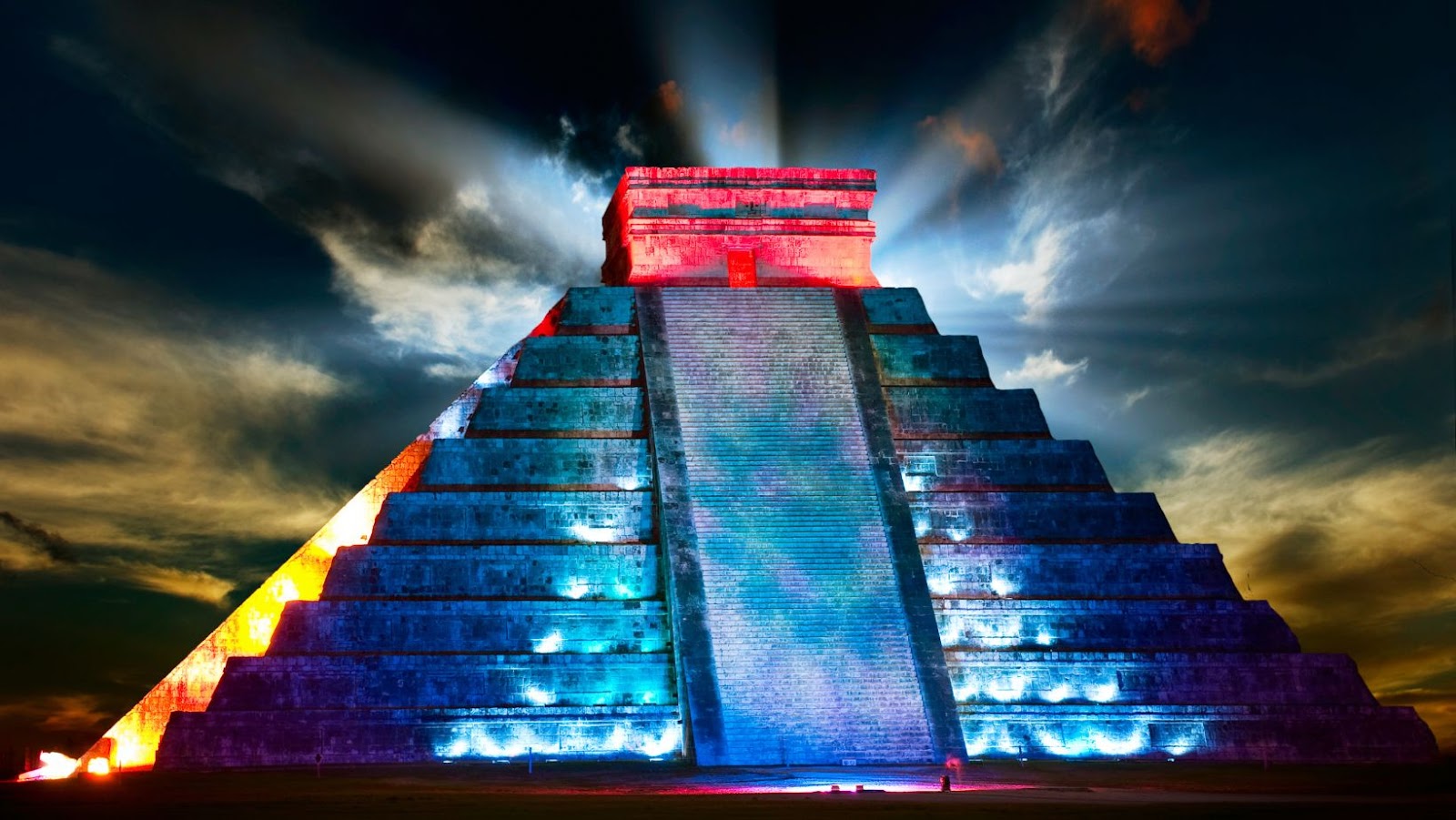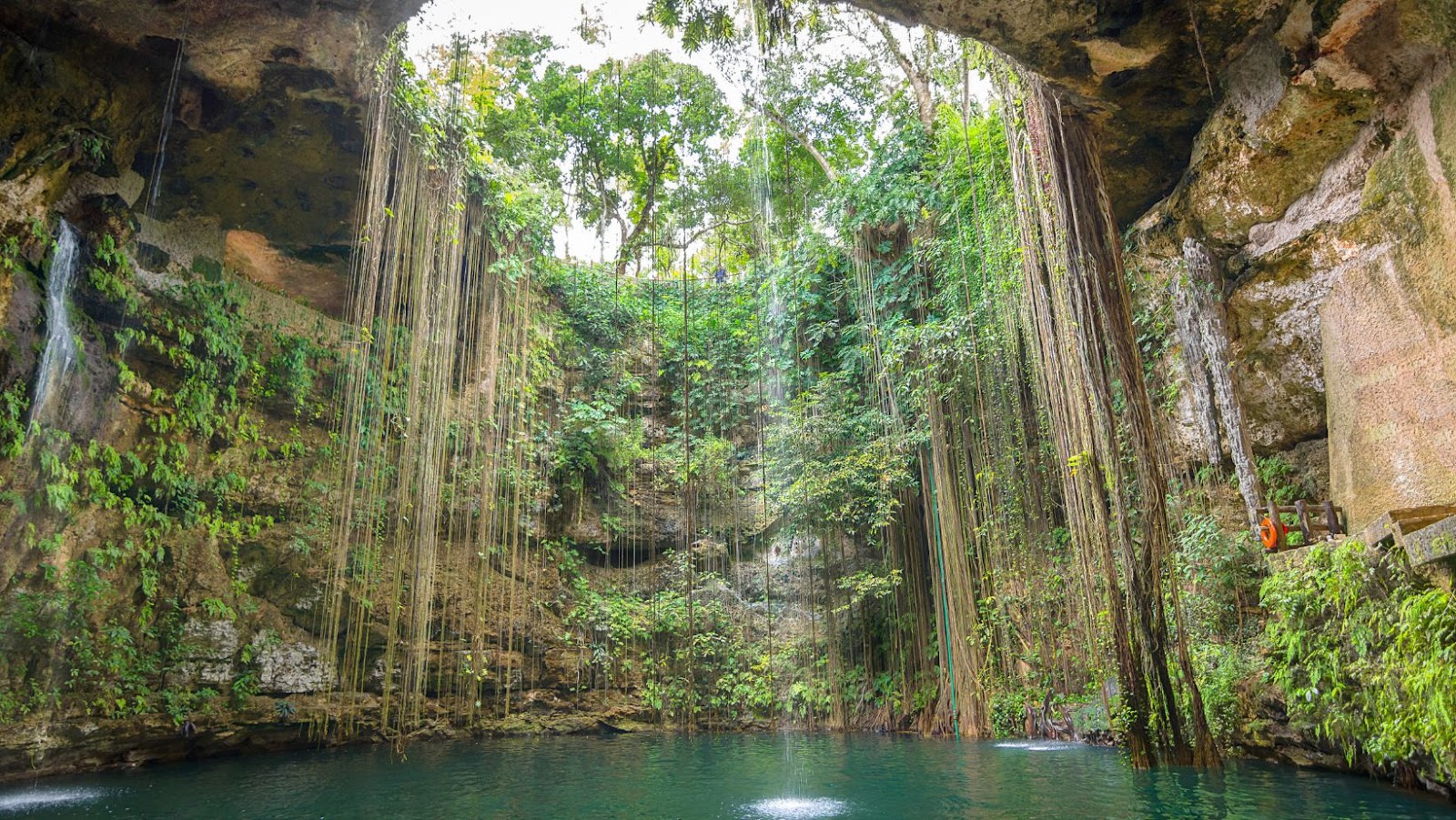
Introduction
Chichen Itza and Tulum are two important Mayan cities located in the Yucatan Peninsula of Mexico. Both of these cities offer a wealth of archaeological and cultural wonders. But, they also offer a range of wildlife that can be observed while visiting these amazing sites.
In this article, we’ll analyze some of the animals and plants that are native to these two cities and discuss the differences between them.
Overview of Chichen Itza and Tulum
Chichen Itza and Tulum are two important archaeological sites in the Yucatán Peninsula of Mexico. The structures at both locations were built by the Maya civilization during the pre-Columbian era. Chichen Itza includes a unique temple complex, while Tulum is noted for its ancient walled city and beautiful coastline overlooking the Caribbean Sea. Both sites have become popular destinations for tourists interested in learning about Mexico’s cultural heritage and witnessing its spectacular wildlife.
The forests, jungles, and mangrove swamps surrounding Chichen Itza and Tulum contain a variety of animal species which may be seen by visitors. The region is home to numerous reptiles like crocodiles, boas, and iguanas; coastal birds like herons, pelicans, and frigates; as well as terrestrial mammals such as wild boars, dwarf deer, monkeys and opossums. Amphibians, plant species such as palms and cacti, and dozens of insect species can also be found at both sites.
Many other forms of life also inhabit the ruins of Chichen Itza and Tulum. Monkeys are easy to spot in these areas due to their habit of feeding on mangoes that drop from trees growing nearby or inhabit archaeological structures on site such as pyramids and temples. Iguanas are commonly seen sunning themselves on rocks within the Chichen Itza ruins or on edges surrounding Temple Kukulkan located between two of its main structures – El Castillo & La Iglesia building respectively – while small brown bats seek refuge in their crevices during daylight hours before emerging at night in search for food.
Visitors to these magnificent locations have opportunities to observe many types of animals native to this part of Mexico or introduced by man over time. An unforgettable experience awaits those travelling here either for pleasure or academic interests alike!

Chichen Itza
Chichen Itza is an ancient Mayan city with a unique combination of natural beauty and archaeological sites. Home to the famous Kukulkan Pyramid, it is a popular tourist destination and a must-see if you visit Mexico’s Yucatan Peninsula. With both a wide variety of wildlife and incredible Mayan ruins, Chichen Itza is an area of fascinating history and culture.
Let’s take a deeper look at the wildlife and ruins at this incredible site.
Wildlife of Chichen Itza
Chichen Itza, the site of some of the most famous Mayan ruins in Mexico, is located in the state of Yucatán. Over centuries, humans have cultivated the area around Chichen Itza, leaving behind a well-preserved example of pre-Columbian Mayan architecture for us to explore today. However, this quarter square mile also contains complex ecosystems that are important for study and species conservation.
The wildlife at Chichen Itza includes an abundance of invertebrates that help form a diverse population within several varieties of floral habitats. The vegetation consists of sparse low-lying thorny shrubs with tall cacti not far behind. This jungle is home to a number of animals such as deer, opossums, rabbits, quail and wild turkeys who feed on plants found in wetland areas as well as native wildlife.
In addition to being home to one species listed on Mexico’s endangered animals list – the Red Belly Hawk – Chichen Itza’s forests are home to a wide range of bird species from owls to hummingbirds and warblers. Resembling nearby tropical forests, these birds inhabit humid vegetation ranging from mahogany trees to vines and hedges around riverside lagoons and surrounding wetlands beside rainforest coastal habitats rich with flora and fauna across much larger landscapes than those found in archaeological sites like Tulum or Chichen Itza itself.

Unique Species Found in Chichen Itza
Chichen Itza is known for its amazing pyramids, but the region is also home to a wide variety of wildlife species. This heavily forested region houses some species that are unique to the area, offering insight into the biodiversity of this part of Mexico.
Mosquitoes are common in the area and can be found in all types of ecosystems, including marshes and mangroves. The most dangerous species is called Culex quinquefasciatus, as it carries diseases like West Nile virus, dengue fever, yellow fever and other vector-borne diseases.
The Great Curassow (Crax rubra) is an endangered bird species that lives in the subtropical forests around Chichen Itza. These birds eat berries and insects from the trees and nests on them too! Another interesting bird found in Chichen Itza is the White Woodpecker (Melanerpes candidus). These woodpeckers prefer old trees with dead wood for their foraging grounds, which makes them vulnerable to deforestation activities.
Two mammal species found only in Chichen Itza’s forests are Baird’s Tapir (Tapirus bairdii) and Central American red brocket deer (Mazama temama). Both these mammals live exclusively in dry deciduous forests and rely heavily on fallen leaves for their food source.
Other animals living in Chichen Itza’s forests include:
- Agoutis (Dasyprocta punctata)
- Northern Tamandua (TB widii)
- Nine-banded armadillos (Dasypus novemcinctus)
- Howler monkeys (Alouatta pigra)
- Mexican cougars or pumas (Puma concolor)
- Gray foxes (Urocyon cinereoargenteus)
- Raccoons (Procyon lotor)
- White nosed coatis (Nasua narica)
- Ocelots or dwarf leopards (Leopardus pardalis)
- Collared peccaries or tayras (Pecari tajacu)
- Iguanas (Iguana iguana)
- Boa constrictors (Boa constrictor constrictor)
- Scarlet macaws (Ara macao cyanoptera)
- Toucans (Ramphastos sulfuratus sulfuratus)
- Squirrels (40 spp.)
- Armadillos (1 spp.)

Tulum
Tulum is a pre-Columbian Maya walled city located on the Yucatán Peninsula in Mexico. It’s believed to have been established around the 13th century, making it one of the oldest Mayan cities. Situated on a cliff overlooking the Caribbean Sea, the city is known for its stunning views and its wide variety of wildlife.
In this article, we will explore the wildlife of Tulum.
Wildlife of Tulum
Tulum, along with the other Mayan ruins of Chichen Itza and Coba, is home to a variety of birds, reptiles, and mammals. Over 300 species of birds have been observed in Tulum alone, making it a great destination for bird watching. The wide variety of fauna includes hawks, parrots, hummingbirds, flycatchers, toucans and more.
In addition to these avian species, Tulum’s tropical environment supports numerous reptiles. Green iguanas occasionally inhabit the ancient city walls but are much rarer than other lizards such as geckos and anoles which are common throughout the ruins and beyond. Corn snakes can also be found here although sightings become scarce as you near the Tulum beach resort areas.
Mammalian species found in Tulum include spotted bats which inhabit some of the caves around the ruins as well as foxes which are seen relatively frequently while exploring this area. Monkeys can sometimes be spotted high up in the treetops though they may not be native to Tulum itself (research shows they have been released deliberately or escaped captivity).
If you plan on visiting outdoor attractions such as Chichen Itza or Coba nearby then it’s important to take caution to avoid any venomous snake bites as many dangerous serpents such as rattlesnakes call these places home. However if you keep your eyes open during your travels through Tulum you may find that exploring these sites provides plenty of opportunities to observe wildlife in its natural habitat!
Unique Species Found in Tulum
Tulum is one of the most popular archaeological sites in Mexico, located in the Riviera Maya region of the country’s Yucatan Peninsula. Although much smaller than Chichen Itza, it is home to a vast array of interesting wildlife thanks to its tropical climate. Visitors may be
Chichen Itza vs Tulum
When it comes to Mexico’s ancient Mayan archaeological sites, it is easy to draw comparisons between the renowned sites of Chichen Itza and Tulum. Both sites are popular tourist attractions and are renowned for their majestic structures that have been preserved over time. What is less known, however, is the diverse and rich wildlife of both sites.
In this article, we will compare and contrast the wildlife of both sites:
Comparison of Wildlife Between Chichen Itza and Tulum
Chichen Itza and Tulum are two of the most visited archaeological sites in Mexico. Though they are both very impressive, interesting and beautiful, there are also many differences between them, including the wildlife that can be seen at each site.
At Chichen Itza, the wildlife is somewhat varied due to its vast size. Animals such as coatis, deer, armadillos and wild turkeys can frequently be spotted here. In addition to these animals, there are some species of birds such as the Common Black Hawk and Laughing Falcon which inhabit this area. On rare occasions wild cats such as pumas can also be spotted in this area.
In comparison to Chichen Itza, Tulum has a more limited range of wildlife due to its smaller size. Common animals that inhabit this area include raccoons and agoutis (a type of small rodent) as well as various types of birds such as parrots and doves. Although not commonly sighted due to their hostility towards humans, jaguars have been known to make occasional appearances in this region.
In terms of general biodiversity both sites host similar numbers overall with certain animal concentrations being greater at one than the other – for example Chichen Itza has notably higher populations of larger mammals while Tulum’s bird diversity is slightly more diverse than that at Chichen Itza. Ultimately both ancient cities offer visitors great opportunities to observe local wildlife making it an ideal destination for those interested in exploring Mexico’s amazing biodiversity.
Conclusion
Chichen Itza and Tulum both provide stunning views of the wildlife in the area. Both have unique characteristics, with Chichen Itza featuring a large Mayan city and Tulum being a more tranquil, coastal destination.
Ultimately, your preference between the two sites will depend upon your interests, whether you are interested in the historical background of Chichen Itza or if you prefer to observe the diverse wildlife of Tulum. In any case, both locations offer something unique and are well worth a visit.
Summary of the Wildlife of Chichen Itza and Tulum
The lush jungles of Chichen Itza and Tulum harbor a wealth of creatures that live in the surrounding forests, hidden cenotes, and coastal shorelines. Among the birds you’re likely to spot here are toucans, parrots, eagles, and Turkey Vultures. Reptiles such as iguanas and crocodiles can be seen sunning themselves on rocks or swimming in rivers. Monkeys and coatis can be spotted leaping from tree to tree during the day. Jaguarundi covertly hunt for prey in the early morning or late evening hours at Tulum.
Exploring the jungles of Chichen Itza or Tulum is an incredible opportunity to observe some unique wildlife species up close. To this end, it’s important to follow proper wildlife viewing etiquette—stay on established trails or pathways and never feed wild animals as this can harm their health and upset the ecosystem they depend upon for survival. By respecting these simple guidelines while exploring either location, visitors will ensure that future generations will also be able to enjoy up close encounters with these fascinating creatures!



